Whale Secrets
Seabed farmers
Cetaceans with bales are the so-called mysticetos. These are usually considered true whales. Among these species are the following: the gray whale, bacon, cereal and the Basque whale.
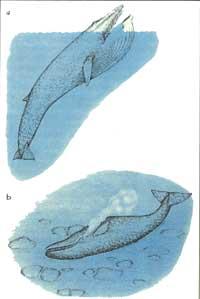
Due to the characteristics of the gray whale, it only forms family (Eschrichtiidae) among cetaceans. It has very rare and dark areas on the head, probably as fossil remains of its mammal origin. When nothing on the water surface is easily recognizable by the soft gray color of your body. The appearance that the parasites give to the head is very spectacular, and the double jet of water that arises from that head can reach up to four meters in height. At rest it can last more than half an hour over the sea and is often seen swimming with dolphins.
These animals are large migrants and can travel about 20,000 kilometers a year. It has very ferocious predators. One of them is its natural environment, the espadaña. The other, most terrible, the human being. In the Atlantic Ocean there were 100,000 grey whales and today, due to the massacres suffered, there is none. In the Pacific there were 30,000, and at the beginning of the century there were only 4,000. In the face of the disappearance of the species, measures had to be taken and the prohibition of whaling. It has now increased to 10,000.
In recent years the gray whale has become fashionable, especially for the discoveries of researchers since 1975. That year, in the Bering Sea, they began to investigate the fund to build oil platforms in those places. During these works it was discovered (surprised) that the seabed was crossed by long and wide paths and holes. The causes of these meadows and underwater paths were, in principle, absolutely mysterious to researchers.
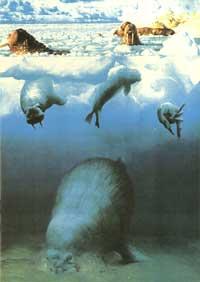
After a few years more data began to appear and what in principle was nothing more than a suspicion, became reality. Its engineers were gray and walrus whales. But how is this kind of engineering possible? And even more exciting: why did the whales do those amazing jobs?
XIX. In some writings by the whalers of the twentieth century it can be read that some cetaceans saw their mouth plummeted out of the sea. Moreover, if a whale is caught and the stomach breaks, it was found that large masses of animals such as the quisquilla were found. These testimonies expressed by the whalers and the latest research have given rise to a coherent model of what can happen in the submarine, when at present this inexorable mystery of the seabed is being discovered.
According to this model, the gray whales would be peasants of meadows or submarine fields, while the walruses would be engineers of direct roads. The Bering Sea gathers 200,000 walruses and thousands of gray whales. Then a complex and lively marine city is formed on the seafront. The walruses, the sediments of the seabed, begin to revolve anywhere to capture the clams that inhabit the barros and 60 other benthic species.
In this continuous work, they adapt long and straight paths of kilometers. The gray whale, on the other hand, likes the amphipods of the seabed. Therefore, when it reaches the bottom of the sea, it squats the head with the sordid and carries the tongue back, causing the absorption pressure in the hole of the mouth. As a result of this technique, all the mud from the bottom is sucked and inserted into the mouth. He uses it from one side to the other of the mouth and in this process filters it, trapping the corners he likes so much.
Finally, the mud is again expelled elsewhere or leaves it on the sea when it is going to take oxygen. The last step of this complex practice was precisely what the bullet fishermen saw: that the whale carried the mud through the mouth when it pulled its head to the surface.
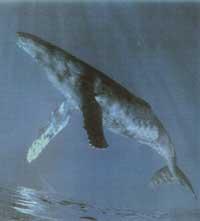

To realize the size of these works, we collect the data provided by the researchers. The sea bottom ploughed by gray whales has an area of 1,200 square kilometers (almost a territory like that of Baja Navarra) and a food there collected 200 million kilograms. Walruses, meanwhile, move 100,000 million kilos of mud in the same season. Therefore, these exciting animals would move the silts that the Yukon River pours into the sea throughout the year, as large farmers. Researchers have also become aware of the importance of this agricultural work.
Whale pickers live in hole systems formed on the sea floor. Whales break this structure by catching the quisquilla, but the smaller ones are able to escape between the whalers and re-sail. Then, in addition to eating the whales, like the peasants, they plant the plowed land (with small corners) so that the harvest of the following year is abundant, since the small corners will rebuild and model the structure of the soil.
Marine dinosaurs
We can consider the sky as a marine dinosaur if we take into account the enormous size it reaches in some species. The blue rune is the largest animal on the planet. A few years ago paleontologists discovered the most gigantic dinosaur on earth. He had some incredible measures and we still do not know how he managed to walk his legs without breaking (because of the weight he had), or how he managed to give as much food to a body as immense as this one.
This fictional dinosaur had a height of 17 meters and a weight of 100,000 kg. Next to this animal also appears the giant blue snapper. The length of the blue rune is 30 meters, almost twice that of the dinosaur. And the body weight is 150,000 kg. Undoubtedly, we are before the heaviest animal of all time on our planet, but being always submerged we do not have a clear awareness of its size.
The skies are skillful swimmers and can reach speeds up to 48 km/h. Considering the enormous size of these cetaceans, for many years whale fishermen have been very interested and the blue whale fishing has been ruthless. To realize this, think that with the capture of this type of whales can obtain a profit of 20 million. The consequences are sad. Of the 200,000 whales attributed at the beginning of the century, only 5,000 were held without control. Today they are protected and the number has risen to 10,000, but it is still in danger of extinction because illegal pirate fishermen laugh at new protection laws.
The blue runny can stay submerged for fifty minutes without taking oxygen. In addition, these animals can circulate in great depth with everything that entails. They have had to overcome many problems related to breathing and decompression.

Man, for example, renews in every breath 20% of the air in the lungs. Not so the big whales. These can renew up to 90% in each breath. Therefore, when the whales dive underwater, they carry a large load of oxygen to stay at the bottom of the sea without breathing for a long time. Also, cherry muscles do not consume oxygen when they work (they are anaerobic). During dives, the skies manage to reduce blood pressure in small arteries, so in large arteries (and therefore in the brain) there is more oxygen. Body temperature also decreases as the animal dives into the depths of the sea. All these mechanisms, therefore, make the blue rorcual become a very suitable animal to stay underwater.
And the underlying pressures, how do they support them? The pectoral skeletons of the skies and the flexibility of the diaphragm keep the lungs tight, thus balancing the high pressures. With a special blend of scuba and gases, man can dive up to 170 meters. Being the sky also a mammal, the special physiology that has shaped it allows to reach without problems up to 300 meters or more. The blue runny, along with this mechanism, has another very peculiar characteristic of increasing its capacity. That is, when immersed the rhythm of the heart is lowered, being able to produce only one heartbeat per minute.
For researchers it has always been a great mystery to know how these animals manage to overcome their decompression, with maximum speed and without stopping traveling the bottom of the sea to the surface of the water. The mechanism that marine mammals have invented to overcome this problem can be very interesting for people, so that in the expeditions to be carried out in the coming years in the maritime exploration we use the same system as themselves and we are able to dive like cetaceans in the future without costumes.

We know that in the submarine humans must breathe air at high pressure and then nitrogen enters the blood at concentrations greater than necessary. If returning to the surface of the water makes the journey with haste, nitrogen does not have time to pass to the lungs and release them there. In this case, the lower pressure turns nitrogen into a bubble and if these bubbles are placed in the arteries or veins can cause embolism or paralysis endangering life.
When cetaceans head upwards dominating the heart rate, they increase the number of pulsations and therefore accelerate the transport of blood. In this simple way, the nitrogen dissolved in the blood is eliminated. In addition, when these animals leave at the bottom of the sea, the pressure that compresses the pulmonary alveolus causes air to pass to the alveoli and lungs, thus decreasing the amount of nitrogen that can enter the blood.
The skies are great migrants and in winter they concentrate on the border between warm and warm waters. The reproduction of these giants materializes there. When the baby gives birth (only once), the female gives her a very fat and rich milk. However, parents do not eat anything in the months that circulate through these warm waters. When the waters are too hot, they return to the archaic and antarctic seas to taste the delicious krill there. To hunt the food, as indicated above, while opening the mouth and swimming, the water entering is filtered isolating the existing krill. On one occasion, in the stomach of a captured beef a load of 2,000 kilos (5 million shells) was found.

Another curiosity is that the blue rorcual can live 80 years, or that the fans of the whales put him in the silk water, an animal that like the pig has everything usable. In the case of cereal, they also use bones to sell them as manure or feed in case of breakage and dust. Whale fans also called him a whale breeder as he did things the other way around. Once the harpoon, unlike the black whale, went to the bottom of the sea. For this reason, current whale enthusiasts artificially expel these animals after their death to keep them on the surface of the water.
Xibarta, the singer whale
Xibartek, although belonging to the balaenopteridae group, have many comparative properties. On the head appear curious corks and long fins, five meters long, very special for many reasons on the chest. Next to them stand their 22 striae at the bottom and their 330 burrs in each gag. The Xibarta is a slowly moving whale and it is very nice to see its dark gray body when it leaves the sea influencing the white-black fins. In the black fin of the tail, each animal has its own white spots, which fulfill the function of its identity document. When dipped, these fin characteristics appear clearly.
In recent years, the jumping capacity of the Xibarta has been particularly appreciated by the researcher. Why do they jump so spectacular? What are the causes?
XVIII. and XIX. This way of proceeding was known to the whalers of the nineteenth century, who were also called: the rupture. The break is the big jump that usually makes the share flying over the sea. When this happens, humans have a unique opportunity to see the entire whale. After remaining in the air, it falls back to the sea, causing a great stir when the body touches against the water. How is the share solved, with such a high weight (about 40,000 kg), to give this type of jumps?.
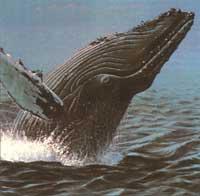
As we already know, share speed increases when you dive. Suddenly, it tilts the caudal fin upwards, which, like planes, gives it a great speed of flight. Then, it leaves the water with enormous force pushing the body into the air. When it leaves the water, it places the body in the corner, it gives a complete turn in the air like sunflower, and when returning to the water, it gathers in its fall all the corners of the area generating a spectacular noise.
It seems that this spectacular behavior is related to social behavior. The whale that is breaking seems to demonstrate its ability to its rivals in search of females. But whales have to be very close to see each other. Therefore, this mechanism would be useful when there is hardly any distance between them. Therefore, some researchers have given it a different interpretation.
In recent visits, they have realized that these Xibart jumps are more frequent when there is wind. But the proliferation of jumps does not occur when abrupt wind gusts occur, but when the wind gradually increases its speed.
As the wind increases, whale jumps increase. It seems that the bustle generated by the fall of the whale is more likely to extend further by the wind. The Xibart have adapted their behavior because they knew it, and when they have the right situation, they jump more so that their messages go as far as possible.
But there is another theory. Considering that all whales extend under water (and not over the sea) and that sounds can spread under water in suitable conditions, some zoologists consider that the sound produced by the fracture is to spread in the water. That is, messages that cannot receive vision or auditions through the air could be transported through the sea water.

Xibart also has other fascinating ways to act. For example, its sophisticated hunting technique for food. In recent times we have been able to know through underwater research that these cetaceans work together in the capture of food. When they see the food, some friends get together and start molding the bubble nets. In turn, they are thrown down the lower and side parts, scaring and surrounding the game pieces. When the prey, like a flock of sheep, is encircled in the bubble jail, they begin to sow the towels. Once again, we see the developed behavior of mammals, bringing us closer and closer to the intelligent.
But one of the most exciting secrets the Xibart have kept for millions of years, for the first time we have known it a few years ago.
In April 1964, the prestigious zoologist Roger Payne entered the sea of the Bermuda Islands, with the aim of studying whale behaviour in their surroundings. The zoologist returned fascinated by that attractive adventure. According to what he would explain below, at times he had an impression that he was on another planet and his intelligent beings were whales.
In this dark submarine, whales moved constantly emitting numerous sounds and melodies. The zoologist recorded all the songs and melodies and then analyzed them through the computer. As a result of the study, it was verified that the sounds emitted by the whales were very engraved, and that many of them were inaudible to the human being, since the language between the whales was forbidden to us.
The songs (or interviews) created by Xibarte had a duration of one hour. Many times those songs were repeated note by note, respecting the measures and measures. Therefore, they were not sounds emitted by chance, but created by a will. These whales, when the time came, abandoned the traditional sea with a special song and, six months later, returned to the same place, took up the song they had left (with an exact note), as if nothing had happened at that time. These songs, for their part, change each month in a structured and concrete way, since the whales had a special calendar adapted.
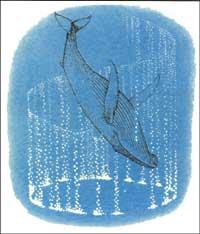
Analyzing these songs it was found that they contained 106 bits of information. This is approximately the informative content of the classics of the Iliad or Odyssey. Therefore, we can meet a protolanguage. In addition, these sounds serve to communicate with whales located at a distance of 15,000 kilometers. The sounds emitted by the Xibart have a very large wavelength. This means that sea water cannot absorb sound, so messages sent by these whales can be transported from one end to another.
Whales, therefore, are friendly beings that adapt jumps, hunters, swimmers, fishermen. They also play and love, breathe through the lungs as the human being and exchange information, whose content is similar to that of our classics. It is an underwater network to communicate with each other. Knowing all this, can these whales be considered human intelligence beings? Are the songs that the whales emit signs of communication or at the bottom of those songs there is room for improvisation, sensation and poetry?





